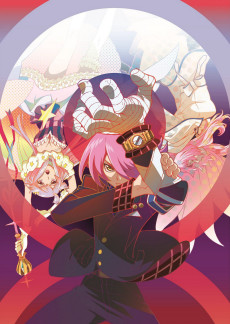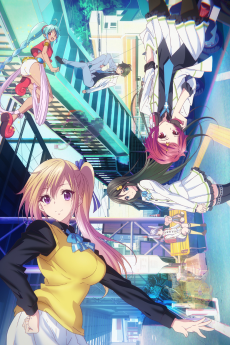ROLLING☆GIRLS
STATUS
COMPLETE
EPISODES
12
RELEASE
March 29, 2015
LENGTH
24 min
DESCRIPTION
Ten years after the Great Tokyo War, each prefecture in Japan has split up into independent nations. Each nation is ruled by a prophet called "Mosa" and an army called "Mob" as they start to compete to take over other countries. Four "Mob" girls from the Saitama clan, Nozomi, Yukina, Ai, and Chiaya, are ordered by their "Mosa" to travel around Japan riding their motorcycles to mediate multiple battles between nations and clans as they emerge.
(Source: Anime News Network)
CAST

Chiaya Misono

Yumiri Hanamori

Nozomi Moritomo

Ari Ozawa

Ai Hibiki

Risa Taneda

Yukina Kosaka

Rina Hidaka

Narrator

Tomokazu Seki

Masami Utoku

Ayumi Fujimura

Kuniko Shigyou

Fuyuka Ooura
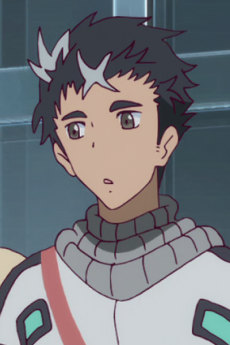
Tomoki Suzuka
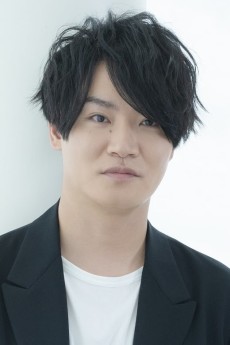
Yoshimasa Hosoya

Haruka Misono

Sayaka Oohara
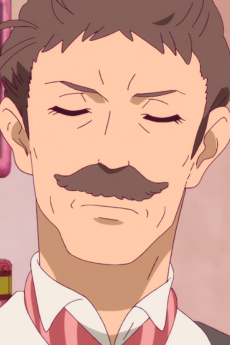
Dandy

Akio Ootsuka

Tomomori Moritomo
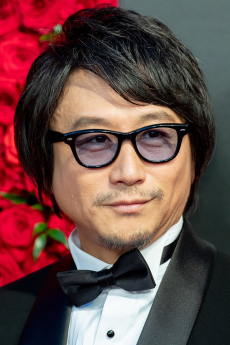
Hiroki Touchi

Hinayo Moritomo

Yuki Masuda

Kuranosuke Momiyama

Tomokazu Seki
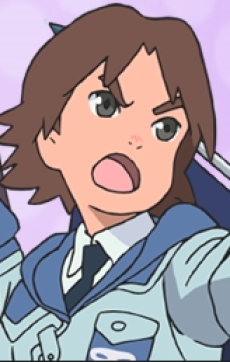
Hitoshi

Daiki Yamashita

Yukari Otonashi

Nozomi Furuki
EPISODES
Dubbed

Not available on crunchyroll
RELATED TO ROLLING☆GIRLS
 MANGA ActionRolling☆Girls
MANGA ActionRolling☆GirlsREVIEWS

planetJane
83/100Studio Wit's one-of-a-kind reverse-action anime was generally passed over in its day. Does it deserve a second look?Continue on AniListAll of my reviews contain __spoilers __for the reviewed material. This is your only warning.
Rolling, falling, scrambling girls. For others, for themselves. Even if they’re destined to be “one of the rest”
--Caption under the title card that opens each episode.With something like Rolling Girls, it is perhaps best to take things in order. Despite the show’s tagline trumpeting its themes at you openly at the start of each episode, it takes a while before it becomes apparent what this series is trying to do. I say with no exaggeration that watching Rolling Girls is something of a humbling experience. It’s a show that flips your expectations around enough times that it keeps you guessing until the very end.
To be, admittedly, extremely reductive, Rolling Girls is a sort of reverse-shonen. A flashy, colorful action anime--think something like Kill la Kill--told from the perspective not of its ostensible heroes, but a quartet of un-powered “side character” types.
In almost any other anime, our leads would not be our leads. The main character would be Masami, a “Best” (that’s what this show calls its superhumans. Everyone else is a “Rest”. On the nose, ainnit?) who likes to play Power Rangers dressup under the name Maccha Green.

Seen here.
Masami is, in fact, introduced that way. She is the leader of what the show terms a Vigilante Squad, a group of peacekepers headed by a Best who keep the order in the show’s setting. That setting being a Japan defined by a years-in-the-rearview event called The Great Tokyo War that fractured the nation into dozens of competing tiny countries. Masami is an archetypal action anime heroine, and the show really seems like it’s going to be her story until about two episodes in. She is injured, loses the Heart Stone that gives a Best their powers, and is promptly sidelined.

Our Cast. Chiayi, Yukina, Nozomi, and Ai. Left to right.
Enter Nozomi. Introduced an episode prior as Masami’s sidekick-of-sorts (despite apparently being the only one who hadn’t caught on long ago that she was Maccha Green), and now volunteering to take up Green’s secondary responsibility, that of a travelling peacebroker. One who helps solve conflicts between rival vigilante groups. She’s joined by three other girls; Yukina, who is clumsy, gets lost easily, and likes to draw, Chiaya, who is mysterious, terse, owns a magic camera, and somehow knows all the others’ childhood nicknames, and lastly Ai, who seems to think she’s the protagonist of a shonen manga, and is introduced with one of the all-time great one-liners of the medium.

The pun is apparently even dumber in the original Japanese, if you can believe it.
The series’ first two thirds are about, on one hand, these four girls, and on the other hand, their adventures throughout the fractured Japan. This is where the traveler story elements are strongest. There’s an awful lot of colorful set design, flashy animation, and small-scale stories of love and conflict.
The actual content of these stories varies wildly. In the first nation they stop at, our girls are accused of stealing a heart stone and have to find it before the local vigilante captain executes them. In of itself, that’s not a particularly crazy story. That it takes place in a Tokyo transformed into an “always-on” cosplay and anime capitol of the world is what gives it its character. The real reason the stone was lost? Turns out to be because it fell in the bushy afro of a life-sized shonen action figure. This is just how Rolling Girls operates. Casually resolving plot threads through bizarre twists that make an internal logical sense, but sound completely ridiculous out of context. On top of that, the show likes to drop casually-insane worldbuilding like this, drawing zero attention to it at all:

What’s the Tokyo Tower Robot? We do find out, but it’s not really relevant in any major way, and seems to mostly exist to remind the viewer that the world this is all happening in is one vastly different from our own.
In one particularly amazing case, a story about two conflicting towns and their respective vigilante squads seems to be an oddball meditation on how to peacefully resolve international conflicts, and responsibly building a national identity around peaceful things like sport and food as opposed to pure power dynamics. Because this is Rolling Girls, that arc also involves a group of motorcycle-bound delinquents who talk only in unintelligible grunts and bike revs, a statue-building old man and his daughter who doesn’t think she can live up to him, and about a trillion other things. That the following arc, about a star-crossed geisha and pink-haired glam-rocker, almost seems tame in comparison until its climax, says a lot about the sheer amount of stuff Rolling Girls heaps on you.

Not to imply that any arc that could give us this screencap could in any way be less than stellar.
We should nod to the show’s audio and visual work here too. Rolling Girls’ style is not quite wilfully unique, it does definitely look like a television anime from the mid-2010s, but the thin-line drawing provides a unique charm. The backgrounds on the other hand, look like little else. Check out the castle of arc villain Kukino Ura just as an example.

Audio-wise, the show is obsessed with classic rock. A fictional rock band--The Momiage Hammers--are a recurring plot element and a big deal is made out of how a good song can make you feel like you can take on the world. This is probably the closest the show ever gets to wearing a semi-obvious if you look for it FLCL influence on its sleeve.
So that’s the gist, but where does this all go?
Well, many places. The show’s final third drops some trademark out-there revelations (Chiayi is a space alien! Heart Stones don’t actually do anything on their own!) but more importantly it’s where the actual point comes in. Rolling Girls’ main theme seems to be that not everyone can be--or more importantly has to be--a hero in the traditional sense. Our leads never engage in traditional action anime heroism. The flashy sakuga-laden fights are always between other people. Only Ai (whose character is defined by desperately wanting to be an action heroine) even gets to do anything close, where she manages to stop a fight between two Bests in one of the show’s best scenes.

To be fair, she has help from a cute dog.
But they do, in a manner of speaking, save the day. The final arc of the show concerns a brewing war between two nations, and to greatly collapse the details, it’s neither a recovered Maccha Green nor any of the other actual “heroes” who end things. Nozomi and friends deliver a crucial package at the right moment (because this is Rolling Girls, it’s a wooden carving that powers a giant robot), and the conflict is ended before it can spiral out of control.
Chiayi ends up having to return to her planet, but she’s immensely grateful to Nozomi for the times they shared together, and in this single line the show sews together its subtext and plaintext, foregrounding its themes exactly once in its entire 12-episode run.

Because it holds out on this for so long, Rolling Girls is admittedly a bit of a frustrating watch. At the same time, there’s a secondary theme running here about (to use a cilche) how it’s the journey, not the destination. Maybe it really doesn’t matter that much that it takes Rolling Girls so long to get to the point when it only needs a few seconds to make it, and when getting there in the first place was so fun.
Rolling Girls does not slot comfortably into any major artistic movement in anime of the 2010s. Even the FLCL-indebted concept-action anime category it’s sometimes lumped into (which includes the aforementioned Kill la Kill as well as Flip-Flappers, PUNCH LINE, and a few other things) doesn’t quite fit. Despite all this, Rolling Girls is something of an ultimate “anime for anime nerds”, perhaps the anime equivalent of record-collector rock, simply for riffing on so many ideas without engaging in much explicit reference, the glam rocker in episodes 7 and 8 (a clear nod to FLCL’s Haruko) aside. That it's from Wit, a studio with a vast repertoire that contains nothing else at all like Rolling Girls, just makes it feel that much more special.
I don’t say this lightly, but more than simply being something you don’t see much of (a phrase broad enough that it can, ironically, be applied to many anime and still be true), Rolling Girls might straight up be one of a kind. It’s a little strange to be saying this about something that’s comparatively recent, but, time passes, and the mid-2010s are already far enough in the rearview that shows a few years old deserve a second look. The show managing to thread that final needle when it most needs to pushes Rolling Girls from a curiosity to an honest-to-god hidden gem, if a somewhat flawed one.
This is a series that, if you have interest in the wider ways that anime interact with each other, you really should give a look, because it’s among the best at cleverly dancing around audience expectations while still nailing that all-important emotional hit in its finale.
Rolling Girls may never find itself being considered an all-time great, but that’s surprisingly apropos given its themes. Director Kotomi Deai has not helmed a full-length TV series before or since, but perhaps she doesn’t need to. Maybe somewhere, right now, Rolling Girls is some aspiring director or animator’s very own Maccha Green. I think if that means we get another show as smart and peculiar as Rolling Girls in the future, that’ll make it all worth it.
After all, everyone's a hero to someone.
And if you liked this review, why not check out some of my others here on Anilist?
SIMILAR ANIMES YOU MAY LIKE
 ANIME ActionFlip Flappers
ANIME ActionFlip Flappers ANIME DramaSora no Method
ANIME DramaSora no Method ANIME ComedyUchouten Kazoku
ANIME ComedyUchouten Kazoku ANIME ActionKyousougiga (TV)
ANIME ActionKyousougiga (TV)
SCORE
- (3.2/5)
TRAILER
MORE INFO
Ended inMarch 29, 2015
Main Studio WIT STUDIO
Favorited by 188 Users
Hashtag #ROLLINGGIRLS


